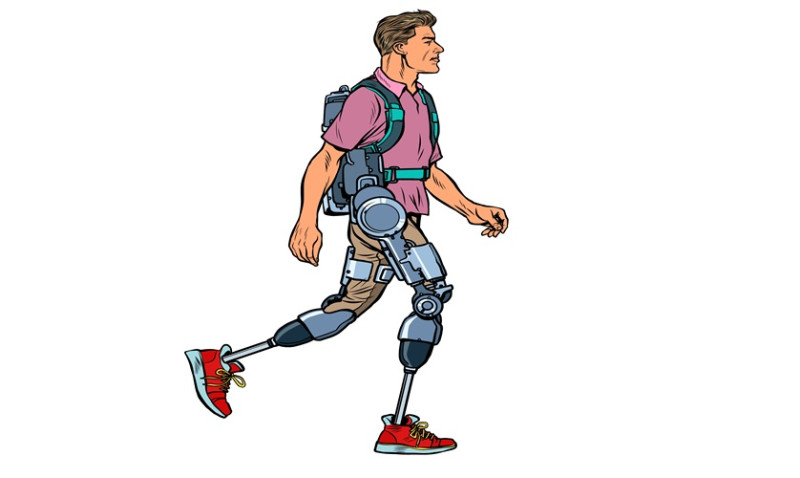
When it comes to effective rehabilitation and patient care, especially within physiotherapy, communication becomes just as important as treatment plans and physical interventions. One particularly impactful communication strategy gaining traction is Motivational Interviewing (MI). Originating in the field of addiction therapy, MI has rapidly evolved and found a valuable place in healthcare — including physiotherapy. But what is it, and how does it work within the context of physiotherapy? Let’s break it down in a way that’s clear, practical and useful for anyone navigating the rehabilitation world, whether that’s DIY health enthusiasts, young professionals, or even seasoned physiotherapists.
At its core, Motivational Interviewing is about helping patients find their own motivation to make positive behavioural changes. This can be incredibly influential in supporting patients who may be hesitant, ambivalent, or struggling to stick with their recovery and treatment plans. Rather than direct instruction, physiotherapists using MI guide patients in a collaborative manner, exploring values, goals and personal reasons for change.
For example, instead of telling a patient to do their exercises, a physiotherapist using MI might ask: “How do you think sticking to your treatment plan could help you get back to the activities you love?” This subtly shifts the perspective from being told to do something, to personally wanting to do it.
Recent physiotherapy content on YouTube is helping raise awareness of MI techniques, offering real-life demonstrations and patient-therapist interactions that show these principles in action. The platform is filled with useful videos aimed at both patients and professionals. For DIY health enthusiasts or those considering self-guided rehab plans, these resources can be an eye-opening introduction to the power of communication in recovery.
Key Techniques of Motivational Interviewing in the Context of Physiotherapy
MI is based on four central processes, often referred to as the "Spirit of MI". For physiotherapists and anyone working or engaging with physical rehab, it’s beneficial to understand these core elements:
- Engaging – Establishing a meaningful connection with the patient through empathy and understanding.
- Focusing – Narrowing down the conversation to the key behavioural change — such as sticking to rehab exercises or improving posture.
- Evoking – Drawing out the patient’s own arguments and motivations for change, rather than imposing reasons onto them.
- Planning – Collaboratively developing a plan based on the patient’s own goals and commitment.
Let’s break these down with examples from physiotherapy. Engaging might involve simply taking the time to understand where the patient is at emotionally regarding their injury or pain. Focusing might involve identifying their fear of movement after an injury, and turning that into the central topic of discussion. Evoking could look like asking the patient how life would improve if they healed. Finally, planning would mean creating an achievable, patient-led action plan that reflects their own desires and limitations.
When applied consistently, these elements can lead to better outcomes, higher patient satisfaction, and a significantly increased adherence to treatment plans. For young professionals juggling busy schedules or athletes frustrated by setbacks, MI-guided physiotherapy offers a sense of ownership and autonomy that traditional approaches might lack.
How YouTube Is Shaping Awareness of MI in Physiotherapy
YouTube has become a valuable resource for understanding and applying motivational interviewing in the real world. Many physiotherapists and clinics now leverage the platform to share MI-informed practice sessions, case studies, and role-playing exercises. These videos offer a visual and practical learning resource for both healthcare providers and patients alike.
For example, channels run by NHS professionals or registered UK physiotherapists provide insight into how real-life treatment sessions are transformed through MI. Viewers see how small shifts in dialogue make significant behavioural impacts. Some popular video formats include:
- MI roleplays demonstrating typical patient sessions.
- Interviews with physiotherapists discussing challenges in behaviour change.
- Tutorials explaining the psychological theory behind MI.
- Success stories detailing cases where MI improved adherence and outcomes.
These videos are especially helpful for DIY health enthusiasts keen on self-treatment for minor injuries or ongoing pain. Instead of just following generic exercises, viewers learn how a physiotherapist would talk them through their behaviour and motivation, making the guidance feel more personalised and applicable.
Moreover, for tradespeople or designers who may suffer from repetitive strain injuries or physically demanding jobs, these videos offer more than just surface-level instruction—they provide compelling reasons to stick with treatment protocols and make smart changes to daily habits.
Benefits of Using MI in Physiotherapy Practice
Integrating motivational interviewing into physiotherapy practice delivers a host of benefits for both patients and practitioners. These include:
| Benefit | Description |
|---|---|
| Improved Patient Adherence | Patients are more likely to stick with exercises and long-term rehab plans when they feel involved and motivated from within. |
| Higher Satisfaction | The conversational style fosters a more human and empathetic treatment experience, increasing patient satisfaction and trust. |
| Faster Recovery | When patients follow treatment plans consistently, results come quicker, reducing recurrence of injuries. |
| Better Communication | MI enhances the quality of communication between physiotherapist and patient, which translates into better clinical outcomes. |
| Increased Self-Efficacy | Patients learn how to take responsibility and make informed decisions about their health behaviour. |
These benefits are not exclusive to clinical settings — they’re just as relevant for individuals pursuing DIY physiotherapy from home or creating their own programmes with the help of YouTube videos and online content.
Should Architects, Designers and Tradesmen Care About MI?
If you're an architect, interior designer or a tradesman working long hours on your feet or in physically demanding positions, adopting a smart rehabilitation strategy is vital. Learning about motivational interviewing could make the difference between short-lived improvement and long-term recovery.
Understanding how to use MI — even on yourself — means creating a stronger internal motivation to stick with your exercises, improve posture, reduce pain and future-proof your physical health. If you’re responsible for teams or on-site staff, having a basic grasp of MI techniques could also help you better support colleagues dealing with repeated physical strain or injury.
Incorporating MI into workplace wellness efforts can result in healthier employees, fewer sick days, and greater on-the-job efficiency. Watching MI-informed physiotherapy sessions on YouTube can be a convenient first step towards embracing this communication strategy both professionally and personally.
Final Thoughts
Motivational Interviewing is more than just a communication tool — it's a mindset. It’s about helping people uncover their own reasons for wanting to recover, improve, and push forward. In physiotherapy, this can be revolutionary. By tapping into the patient’s intrinsic motivation rather than superficial instruction, therapists achieve longer lasting outcomes and deeper patient trust.
With the rapidly growing library of motivational interviewing content on YouTube, anyone — whether a young professional with a shoulder issue, a DIY enthusiast recovering from a garden mishap, or a physiotherapist upskilling their communication style — can benefit by gaining a deeper understanding of these techniques. The added accessibility offered through online demos and real-life examples makes MI increasingly adaptable to the modern health journey in the UK and beyond.
If you're curious about how to apply these techniques to your day-to-day practice or recovery, search for some MI-based physiotherapy videos and watch how the conversation shifts — not just the treatment. You might just find the motivation to take your physical wellbeing more seriously, one question at a time.





